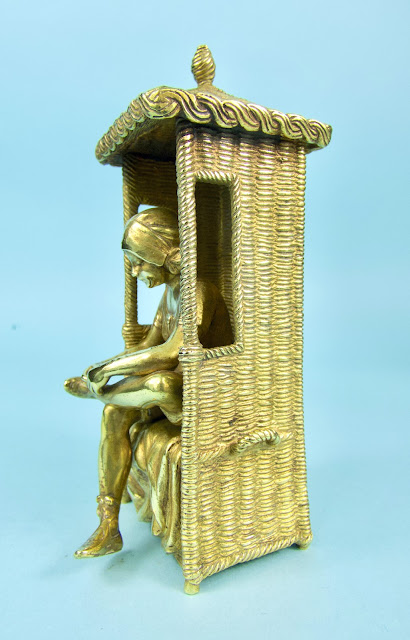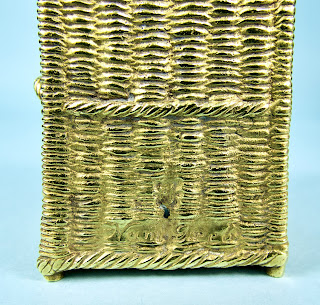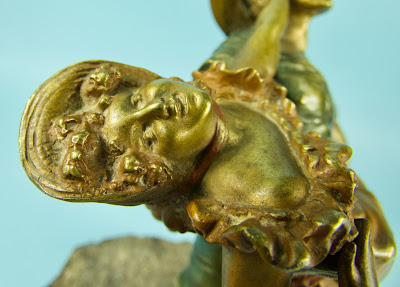I had put off posting because I was traveling with a friend to the United Federation of Doll Club's (UFDC) annual convention in Baltimore. Between the UFDC's sales room and the nearby Rowbear's National Doll Festival show, both featuring a bevy of the best doll dealers in the country, I had dreams of adding a number of new and unusual bathing beauties to my collection--perhaps even the ever elusive Galluba and Hofmann beach boy! I went ready to blow my carefully saved wad, but alas returned with my wad relatively intact. Lot of lovely dolls, but few bathing belles and none I did not already have example of in my collection. So, with the Olympics in full swing, this post is going for the bronze. But the golden gal is certainly is a first place contender! She sits serenely in her wicker beach chair, trying the ribbon to her ballet-style beach slipper (while displaying a well-turned ankle).
The back of the beach chair is stamped with a stylized urn containing a "B" and a cursive signature “Nam Greb.” The urn mark is of the Viennese foundry of Franz Xaver Bergmann, which produced detailed bronze sculptures from the 1860s until 1936. "Nam Greb" is reverse of Bergmann's name (minus one "n"). Some collectors assert that the Nam Greb signature was used on the foundry's more erotic or exotic subjects, but considering that these pieces also often carry the Bergmann cartouche, Bergmann was certainly not trying to hide these works' origin. This belle in a beach chair is 5 inches tall.









